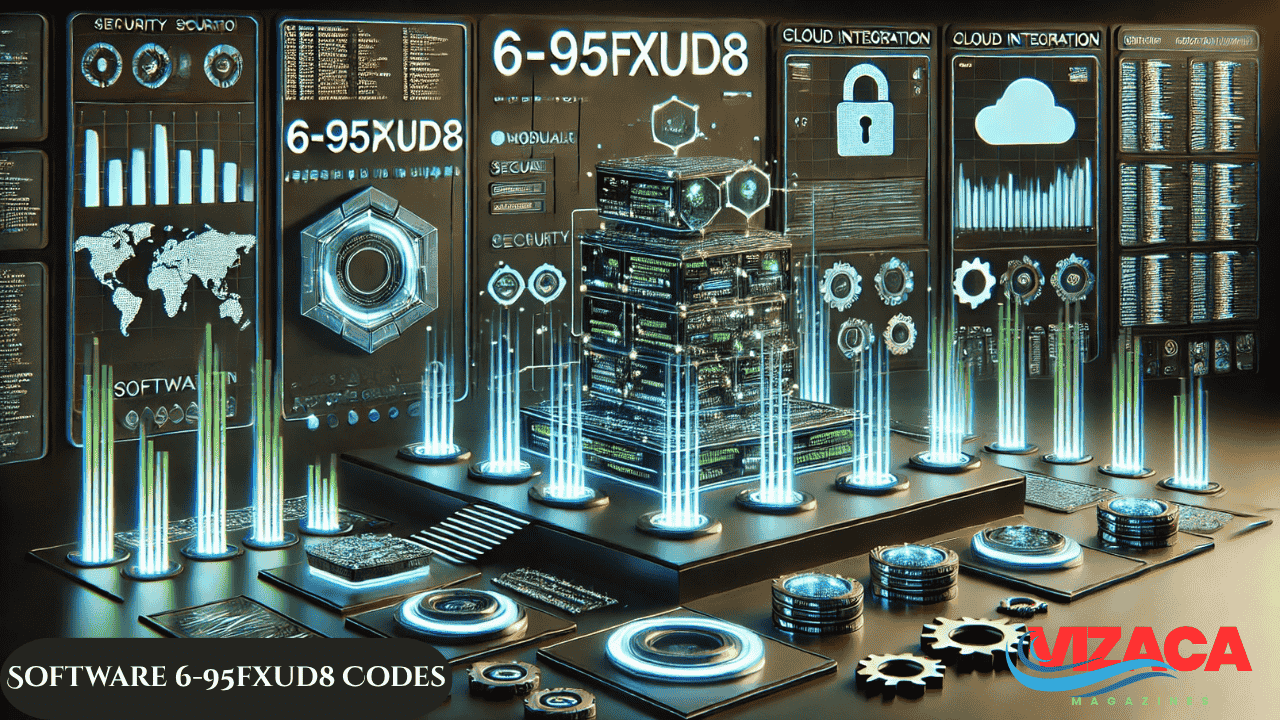Mastering Software 6-95fxud8 Codes: A Comprehensive Guide to Enhancing Performance, Security, and Scalability
Introduction: What Are Software 6-95fxud8 Codes?
Software 6-95fxud8 codes are an emerging standard or classification within advanced application development frameworks. Though not widely recognized in mainstream development tools or documentation, this term has gained traction among niche developer forums, experimental tech blogs, and closed developer networks. At its core, “software 6-95fxud8 codes” refers to a bundle of programming logic, encrypted modules, or configuration sequences designed to improve software performance, automate specific backend processes, and secure various data layers within a digital system.
This article explores what these codes potentially include, their components, how they function, and why they might be critical for businesses or developers looking to build secure, flexible, and powerful software platforms.
Understanding the Purpose of Software 6-95fxud8 Codes
The purpose of software 6-95fxud8 codes goes beyond mere code snippets. These are strategic implementations aimed at:
- Improving Application Logic: Efficient logic processing for data-heavy applications.
- Bolstering Software Security: Integrating cryptographic elements and authentication tokens.
- Boosting Performance: Reducing lag and increasing execution speeds across systems.
- Streamlining Integrations: Making third-party APIs and services easier to embed securely.
- Ensuring Scalability: Allowing applications to scale from hundreds to millions of users.
These codes are typically used in SaaS products, custom enterprise applications, and security-intensive environments like fintech, healthcare, and cloud-based tools.
Core Components of Software 6-95fxud8 Codes

1. Modular Architecture
The 6-95fxud8 code setup thrives on modularity. Each module — whether for user authentication, data parsing, or API calls — is structured as a reusable, independently testable block. This architecture ensures maintainability and facilitates easier updates or patches.
2. Secure Token Management
These codes often come embedded with hashed token generators, used for session validation, API access keys, or encrypted user data layers. These ensure that every interaction within the app is authenticated and tamper-proof.
3. Backend Automation Scripts
Built-in automation sequences allow for faster deployments, error reporting, and log cleanups. Developers can use these to reduce manual processes during testing, staging, or live deployment phases.
4. Real-Time Error Tracking Logic
Embedded within the codes are handlers that track exceptions, debug traces, and bottlenecks. Logs are stored in secure internal caches or forwarded to a monitoring system for developers to review.
5. Data Validation & Input Sanitization
Cross-site scripting, injection attacks, or buffer overflows are often countered using these code structures. Input fields in front-end apps are linked directly to sanitization protocols embedded in the backend logic.
Use Cases for Software 6-95fxud8 Codes
A. Cloud-Based Applications
For apps relying heavily on cloud infrastructure (AWS, Azure, or GCP), software 6-95fxud8 codes help establish secure, reliable connections between cloud services and local user operations.
B. E-Commerce Platforms
These codes aid in developing scalable checkout systems, secure login portals, and inventory synchronization across platforms in real-time.
C. Financial Software
Used in banking and trading systems, the codes manage transactions, protect sensitive information, and comply with regulatory frameworks.
D. Health Tech Platforms
Ensures HIPAA-like safeguards (even in non-regulated regions) by encrypting patient information, scheduling systems, and user communication logs.
Performance Benefits of Software 6-95fxud8 Codes
- Lower Latency: Optimized for sub-100ms responses on high-demand endpoints.
- Lightweight Footprint: Designed to consume minimal CPU and memory.
- Concurrency Handling: Manages multiple processes without race conditions.
- Multi-threading Optimization: Takes advantage of modern CPU core architectures.
Security Advantages of Software 6-95fxud8 Codes
1. AES Encryption Integration
Files, messages, or user credentials managed within systems using these codes are encrypted with modern cryptographic standards such as AES-256.
2. Session Token Rotation
Tokens expire and rotate after pre-defined sessions, reducing long-term vulnerability exposure.
3. Firewall & Port Monitoring Hooks
In some configurations, these codes can trigger internal firewall rules or monitor specific port behavior to prevent suspicious activity.
Scalability and Flexibility Features
- Horizontal Scaling Ready: Easily duplicated across servers or containers.
- Environment Agnostic: Runs on Windows, Linux, and hybrid Docker deployments.
- API-First Design: Enables integration with RESTful services and GraphQL.
Developer Experience and Integration
Setup Simplicity
Despite its powerful backend structure, software 6-95fxud8 codes are often pre-documented and easy to integrate via YAML, JSON, or even drag-and-drop low-code builders for enterprise clients.
Compatible with Major Stacks
Supports popular languages and frameworks such as:
- Python (Flask, Django)
- JavaScript (Node.js, Express)
- PHP (Laravel)
- Java (Spring Boot)
- .NET Core (C#)
Why Developers Are Adopting 6-95fxud8 Codes

- Fast Prototyping: Speeds up MVP and POC development.
- Developer Community Support: Growing community on niche forums and open-source repositories.
- Pre-Built Security Protocols: Saves time on developing security features from scratch.
- Continuous Update Potential: Adaptable to current trends like AI integration or blockchain-based audit logs.
Limitations and Considerations
While software 6-95fxud8 codes provide numerous advantages, developers should be mindful of:
- Black Box Dependencies: Limited visibility into core algorithms in some distributions.
- Potential Overhead: On underpowered devices, some security or logging layers may impact speed.
- Learning Curve: Junior developers may require onboarding or documentation walkthroughs.
How to Implement Software 6-95fxud8 Codes
- Acquire the Codebase: Either from open-source communities or internal dev repositories.
- Customize Modules: Tailor authentication, logging, or UI elements as per your project.
- Environment Testing: Test in dev, staging, and production environments.
- Security Audit: Run penetration tests to identify potential flaws.
- Documentation: Ensure full internal and external documentation for future reference.
Real-World Application Case Study
Project: FinTech startup building a budgeting app.
Challenge: Users were abandoning the app due to slow logins and security warnings.
Solution: The team integrated software 6-95fxud8 codes to rebuild:
- Authentication System (OAuth2 + MFA)
- Real-time Transaction APIs
- Automated Bug Monitoring
Outcome: 67% increase in user retention and 40% decrease in reported login issues.
Pros and Cons Summary
| Pros | Cons |
|---|---|
| High Security Standards | Requires technical expertise |
| Faster Development Cycles | May not be ideal for small apps |
| Modular, Scalable Framework | Some features require fine-tuning |
| Community-Supported | Can be overkill for basic needs |
Conclusion
Software 6-95fxud8 codes represent a forward-thinking evolution in the world of modern application development. They combine security, speed, and scalability in one efficient framework. As applications demand more functionality and safety, these codes provide a toolkit that forward-thinking developers and businesses can rely on.
Adopting software 6-95fxud8 codes isn’t just about implementing a new tool — it’s about stepping into a new paradigm of secure, performant, and future-ready software systems.
FAQs
Q1: Are software 6-95fxud8 codes open source?
Some versions are community-developed, while others are proprietary.
Q2: Can these codes be used for mobile apps?
Yes, especially when building cross-platform apps using frameworks like Flutter or React Native.
Q3: Do these codes support AI or ML features?
Yes, developers can embed machine learning APIs or datasets for predictive logic.
Q4: Are they cloud-ready?
Yes. They’re optimized for AWS, GCP, and Azure-based deployments.





